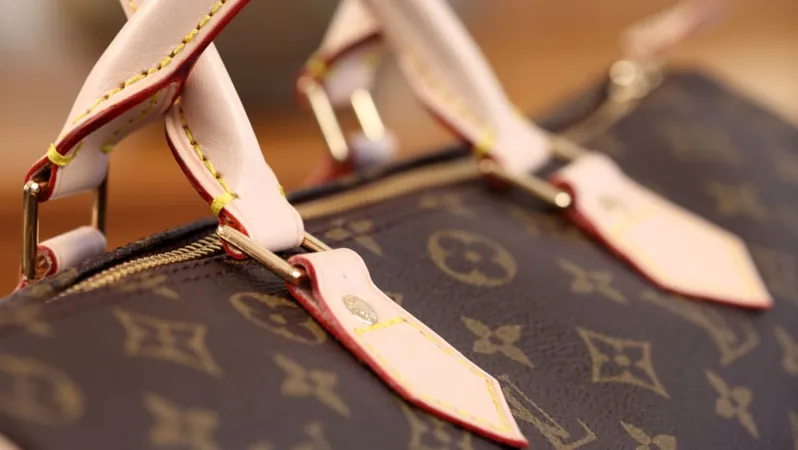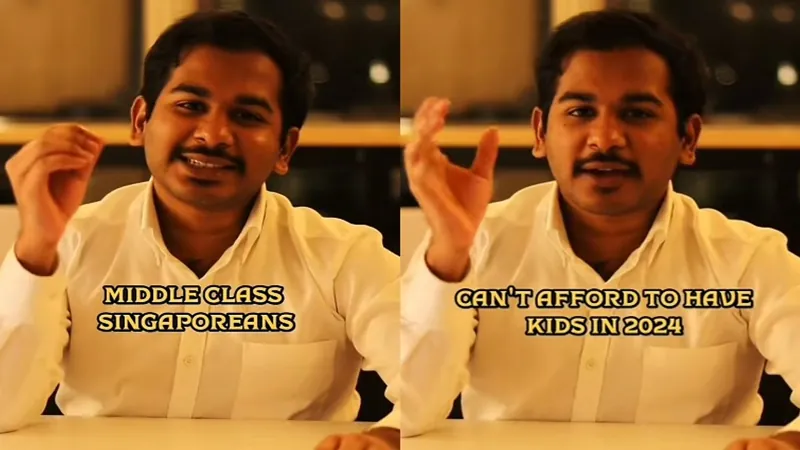
China's Cash-Strapped Shoppers Embrace the World of Pre-Owned Luxury Goods
2024-11-26
Author: Wei Ling
Amidst the bustling atmosphere near Shanghai’s Hongqiao Airport, a cavernous underground market is reshaping the luxury shopping experience. Welcome to ZZER, where consumers are flocking to explore an enticing variety of second-hand luxury items from iconic brands like Louis Vuitton, Dior, and Gucci. Unlike the extravagant malls of the city's uptown districts, ZZER offers a treasure trove of gently used goods, often still in their original packaging.
The rapidly growing demand for second-hand luxury item sales is a major response to a slowing economy and changing consumer behaviors in China, where high-end fashion conglomerates like Richemont, Kering, and LVMH have reported significant dips in third-quarter sales across the Asia-Pacific region, notably outside Japan. Richemont's chief Nicolas Bos noted that the decline in consumer spending may be a more long-term challenge, while Kering issued a stark warning indicating that their profits could drop by half this year.
In sharp contrast to the stagnation felt in new luxury markets, the appetite for second-hand goods is flourishing. Recently, the luxury resale platform Hongbulin was acquired by Zhuanzhuan Group, marking a significant shift towards the pre-owned market. According to data from consulting firms, the second-hand market surpasses Rmb 1 trillion (USD 138 billion) and has grown exponentially since 2015, showcasing an undeniable trend that may not fade soon.
Even though recent statistics surrounding the second-hand luxury market are sparse, platforms such as ZZER and Xianyu have seen a notable uptick in user engagement as more Chinese consumers turn to these platforms to sell and buy luxury items at a lower cost. The ZZER store, which opened its doors in 2022, reportedly adds around 5,000 new products daily, highlighting the sheer volume of luxury handbags and high-end apparel being exchanged among consumers.
As bargain-hunting becomes a common practice, comments on platforms like Xianyu reveal that shoppers are employing aggressive negotiation tactics, hinting at increasing price sensitivity within consumer behavior. Jacob Cooke, CEO at WPIC, emphasized a rising trend of purchasing second-hand luxury as a financially viable option, especially during the pandemic, which had limited cross-border shopping opportunities.
For many, including 28-year-old shopper Li from Xi’an, the economic realities weigh heavily on luxury purchasing decisions. “Even though I can afford these items, I would rather find a good deal and save money,” she noted while exploring ZZER. This sentiment resonates with consumers, especially those in the burgeoning middle class with monthly salaries exceeding Rmb 10,000.
Interestingly, some second-hand luxury enthusiasts are gravitating toward items believed to hold or increase their value over time. Mark Tanner, managing director at China Skinny, observed that there is a marked preference for higher-end luxury goods among second-hand buyers.
In ZZER, for example, a Louis Vuitton bag priced at Rmb 4,762 stands in stark contrast to its original value of Rmb 14,300. A nearby shop dedicated to second-hand bags offers a Chanel bag from 2014 for Rmb 35,800, having once retailed for Rmb 41,000.
Authenticity remains a point of contention within the second-hand luxury market. ZZER has established its own authentication process to combat concerns regarding fake products, presenting buyers with an added layer of security. Yet, the allure of bargain-hunting continues to attract attention, including international visitors like Australian tourist Conor McLernin, who expressed awe at the scale of the offerings.
Li's discovery of second-hand luxury through the Chinese social media app Xiaohongshu was eye-opening. “The value for money here is incredibly high,” she stated, reflecting on her first visit to a second-hand store and how such businesses have only emerged since the pandemic.
Despite potential concerns that the second-hand market might siphon demand from new products, this alternative shopping avenue has sparked interest among a demographic that might not have previously considered luxury goods. As Federica Levato from Bain highlights, this trend showcases an evolving consumer base that is willing to explore luxury products — just at a more price-conscious scale.
As the second-hand luxury marketplace continues to gain momentum, it poses challenges and opportunities for traditional luxury brands in China, suggesting that while the economy may be tightening its belt, the allure of pre-owned luxury remains firmly in fashion.




 Brasil (PT)
Brasil (PT)
 Canada (EN)
Canada (EN)
 Chile (ES)
Chile (ES)
 España (ES)
España (ES)
 France (FR)
France (FR)
 Hong Kong (EN)
Hong Kong (EN)
 Italia (IT)
Italia (IT)
 日本 (JA)
日本 (JA)
 Magyarország (HU)
Magyarország (HU)
 Norge (NO)
Norge (NO)
 Polska (PL)
Polska (PL)
 Schweiz (DE)
Schweiz (DE)
 Singapore (EN)
Singapore (EN)
 Sverige (SV)
Sverige (SV)
 Suomi (FI)
Suomi (FI)
 Türkiye (TR)
Türkiye (TR)